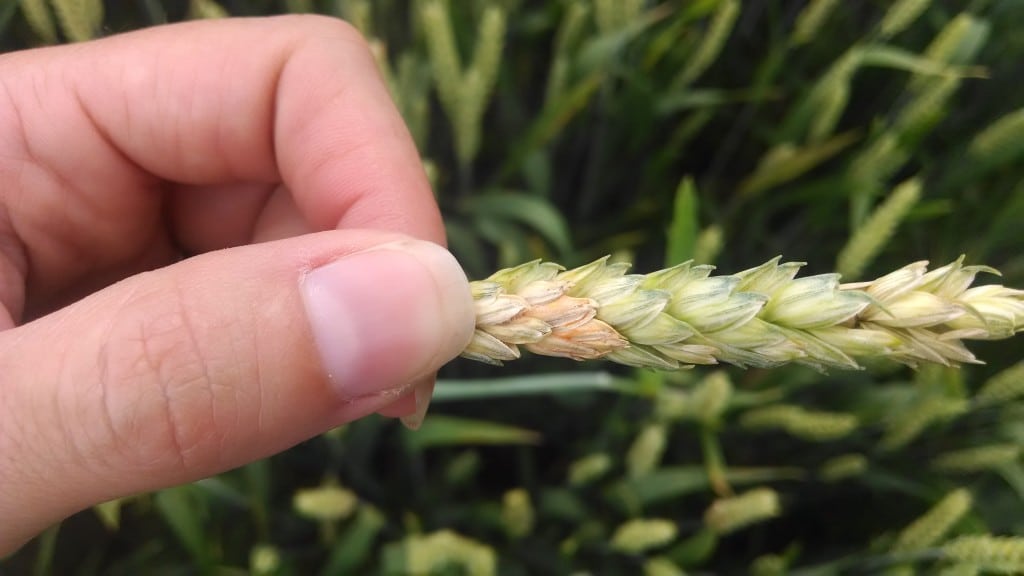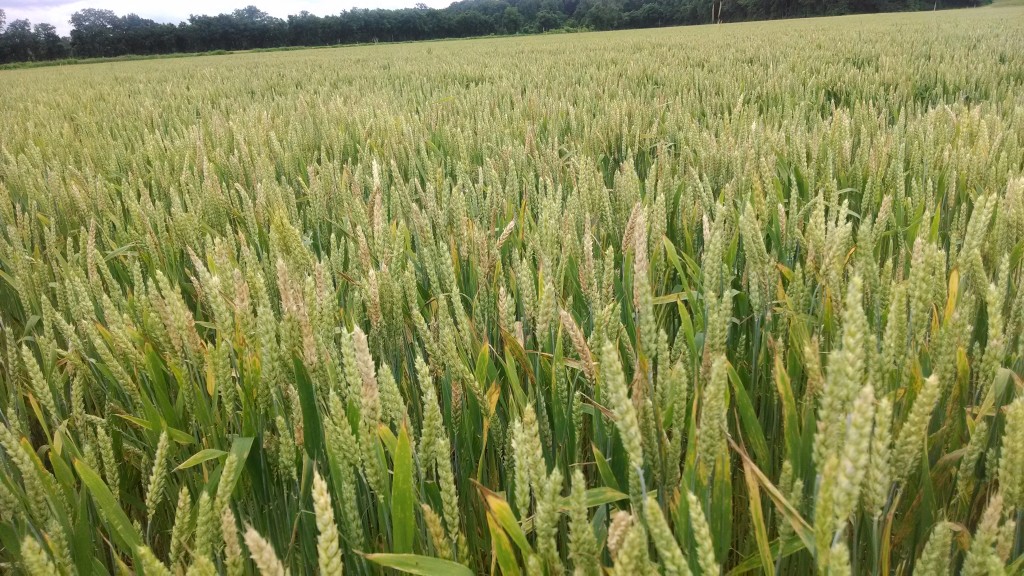Wheat is in bloom across the state and considerations for fungicide applications are being made. While little has been reported on foliar diseases in wheat, the Fusarium Head Blight Prediction model has shown some increased levels of risk for Head Scab.
I haven’t received any reports of rusts or bad cases of leaf blotches or powdery mildew – the good news; but with warmer temperatures and the rain events we’re having Fusarium Head Blight/Head Scab risk is increased to moderate for some areas of Tennessee wheat – the bad news.
The FHB Prediction Center (http://www.wheatscab.psu.edu/) uses models to estimate Head Scab risk using weather variables and one can customize the model predictions by picking variety susceptibility (from Susceptible, Moderately Susceptible, and Moderately Resistant to Head Scab). The website has undergone some major revisions and the new interface focuses attention on the map-based risk for the current date, but the calendar icon allows users to also select dates of interest. The highest risk observed for Tennessee was on April 26 (see image below), most other days the majority of wheat areas in Tennessee were at low risk.

FHB/Head Scab infection is favored by extended periods of moisture (3 or more days with frequent rainfall) or relative humidity (>90%) and moderately warm temperatures (between 59 to 86°F). These conditions present before, during, and after bloom favor spore production, flower infection, and colonization of developing grains.
While wheat is susceptible to infection from head emergence until harvest, infections initiated at and soon after bloom have the greatest destructive potential. Research has shown the most effective timing for controlling FHB and mycotoxin levels is at initial bloom/flowering (Feekes 10.5.1), which relates to at least 50% of the heads blooming in a field. Although applications made 5 to 6 days after initial bloom can also provide a benefit in reducing FHB and mycotoxin levels.


Fungicide products that contain a strobilurin (FRAC or fungicide group 11) can increase the mycotoxin levels in FHB infected wheat. The best products currently available for reducing Scab symptoms and DON levels are Caramba, Prosaro, and Miravis Ace. Although these fungicides, like all fungicides, are not going to provide 100% control, research trials have shown that FHB symptoms and DON levels can be reduced by approximately 40-60% relative to a non-treated check. Multiple factors contribute to this level of control which include fungicide efficacy, application coverage, timing in respect to wheat growth stage (all the heads in a field will not be flowering at the same time), and disease risk (i.e. weather before, during, and after application as well as previous crop – wheat after corn = higher risk). A more comprehension fungicide table can be found at UTcrops.com under wheat, diseases and insects (https://extension.tennessee.edu/publications/Documents/W341.pdf).
Final note on Head Scab management, while fungicides can reduce disease and mycotoxin levels in wheat, the pairing of fungicide with a tolerant Head Scab variety will provide the best protection. More information, including variety susceptibility/tolerance to Head Scab can be found at scabsmart.org.

